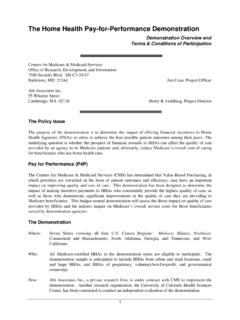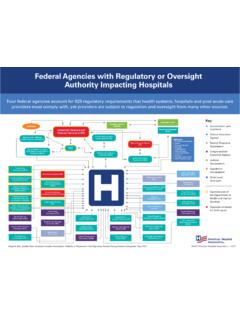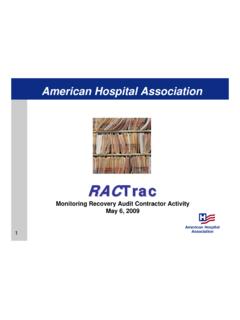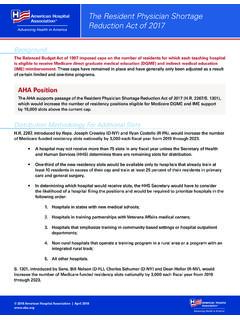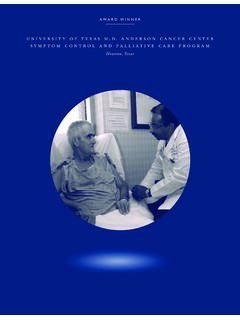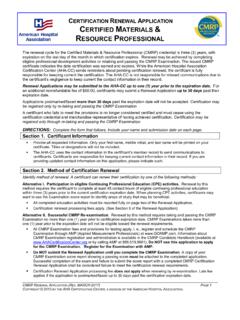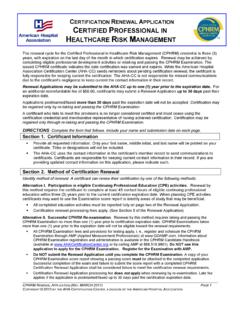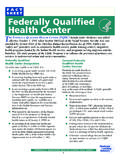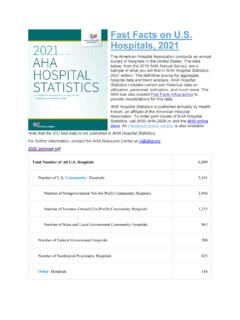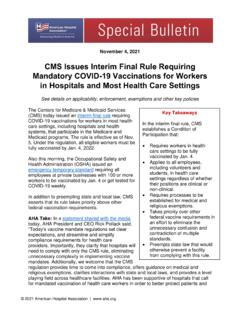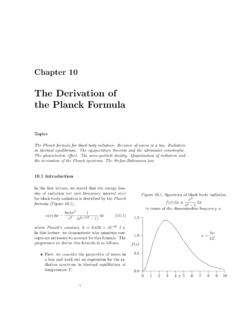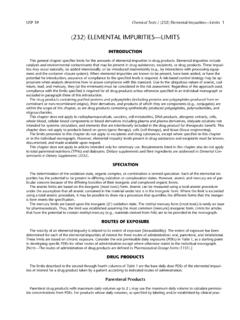Transcription of USP Chapters <797> and <800> New and Revised …
1 2020 American Hospital Association | February 7, 2020 USP Chapters <797> and <800> New and Revised Compounding Standards At Issue The united states pharmacopeia (USP) in June 2019 released several new and Revised pharmacy compounding standards. Specifically, USP published the final Revised version of general chapter <797> (Pharmaceutical Compounding of Sterile Preparations) to accompany the previous released general chapter <800> (Hazardous Drugs Handling in Healthcare Settings). Due to pending appeals, the effective date of USP <797> remains postponed until further notice and USP <800> remains informational until <797> is finalized.
2 While federal regulatory agencies and accrediting organizations likely will not begin enforcement of both Chapters until after the appeals process is complete, several state boards of pharmacy already have begun enforcement of <800>, which may affect your hospital or health system s timeline for compliance. AHA Take While these standards provide an important reminder of the potential hazards of the chemical compounds used in medications, implementation of these standards will be complicated, and likely costly and time-consuming. In addition, while the effective date of USP <797> remains delayed and USP <800> remains informational until further notice, the AHA anticipates required compliance once final.
3 We recommend organizations take immediate steps to assess their specific organizational readiness for compliance and develop a plan to make all necessary changes. Protecting health care personnel from harm resulting from occupational exposure to environmental hazards is a top priority for hospitals and health systems, and implementation of these standards will play a critical role in keeping providers and the patients they treat safe. What You Can Do Share this advisory with your leaders in human resources, nursing, operations, risk management, pharmacy and information technology.
4 Organize your internal team with responsibility for different components of implementation. (see checklist) Have staff develop an implementation plan and identify opportunities for early progress to demonstrate efforts to move toward full compliance. Use the resources included below as a starting point for your organization s work, as appropriate. Further Questions Contact Mark Howell, senior associate director of policy, at 202-626-2317 or At A Glance Key Takeaways Significant investment and cross-organization coordination will be necessary to comply with these standards.
5 Consult your state board of pharmacy to determine if compliance with USP <800> is required in your state. If you have not done so already, begin assessing what changes your organization will need to make to comply with the new standards. USP <800>, while only informational for the time being, provides important standards around employee and environmental safety that all hospitals and health systems should consider. We anticipate required compliance with USP <800> at some point in the near future. 2020 American Hospital Association | 1 Background In June 2019, the united states pharmacopeia (USP) released several new and Revised pharmacy compounding standards.
6 Specifically, USP published revisions to general chapter <797> (Pharmaceutical Compounding and Sterile Preparations) and published a new general chapter <800> (Hazardous Drugs Handling in Healthcare Settings). Due to pending appeals, <797> remains postponed until further notice, and <800> remains informational until <797> is finalized. Hearing dates for the appeals were Jan. 21-22, 2020, and the AHA will update members as more information regarding the outcome of the appeals hearings becomes available. Having an organizational plan for implementation should include: attention to needed changes in human resource policies; personnel training and protection requirements; the construction and ventilation of drug handling areas; changes to certain compounding requirements, such as beyond use dates and immediate use; and other steps needed to mitigate the risks of handling, administering and disposing of these medications.
7 Planning for these changes will be necessary if these standards are adopted as written by either the Centers for Medicare & Medicaid Services (CMS), the Joint Commission or your state board of pharmacy. While <797> and <800> compliance will not be enforced on a federal level until finalized, several state boards of pharmacy currently require compliance with <800>, even as it remains informational. Hospitals and health systems should consult with their state board of pharmacy to determine when compliance with <800> is required. Given the high priority of protecting health care personnel, <800> establishes important standards to implement necessary practices and ensure safety for all individuals involved in the receipt, compounding, administration and disposal of certain hazardous drugs.
8 While compliance with these new standards may require significant capital investment, changes to employee training policies and adaptation of certain human resources protocols, the benefit of implementing these standards should not be underestimated. Due to the broad impact of these standards, the AHA has separated resources into various sections below, with more in-depth information available in links attached to each of the categories. In addition, the AHA remains in contact with CMS and accrediting organizations and is advocating for a thoughtful and comprehensive plan to ensure compliance while acknowledging the large-scale changes required by these new standards.
9 Resources 2020 American Hospital Association | 2 Due to the wide-reaching impact of both Chapters , leadership teams for hospitals and health systems will need to discuss the implications for meeting these new requirements. For example, those facilities with in-house compounding services may benefit from having their facility revisit the financial viability of in-house compounding services, which could require large-scale physical environment changes as a result of the new standards. For those facilities intending to continue in-house compounding, ensuring the development of a comprehensive approach for implementation and compliance is critical.
10 In addition to the resources below, this advisory also includes a high-level checklist for hospital leadership to reference. American Society for Healthcare Engineering (ASHE) Resources Engineering personnel are primarily responsible for the physical environment provisions. This includes engineering controls used to protect the sterility of compounded preparations and the safety of staff working with hazardous drugs. These responsibilities include the construction, maintenance and operation of the spaces. Common physical spaces found in a working pharmacy include the general pharmacy, anteroom and buffer room(s); compounding area and sometimes a storage room or hazardous-drug storage room and the engineering controls; Containment Primary Engineering Control (C-PEC) or hood; and the ventilation system and its interaction with the various spaces.
